Workplace ergonomics has become an increasingly popular investment for businesses and individuals alike. While it may seem like an added expense, the long-term benefits can significantly outweigh the initial cost. By prioritizing employee comfort and well-being, organizations can improve productivity, reduce absenteeism, and enhance overall job satisfaction. However, to justify such investments, it’s crucial to quantify the return on investment (ROI).
Key Takeaways
- Investing in ergonomic workplace furniture offers improved employee health, increased productivity, reduced absenteeism, and enhanced job satisfaction.
- Poor ergonomics lead to increased healthcare expenses, absenteeism, presenteeism, and decreased productivity.
- Key ergonomic solutions include ergonomic chairs, sit-stand desks, and supporting accessories like keyboard trays and monitor arms.
This article discusses the various methods for measuring the ROI of ergonomic furniture, helping you make informed decisions about workplace ergonomics.
Definition of Ergonomic Furniture
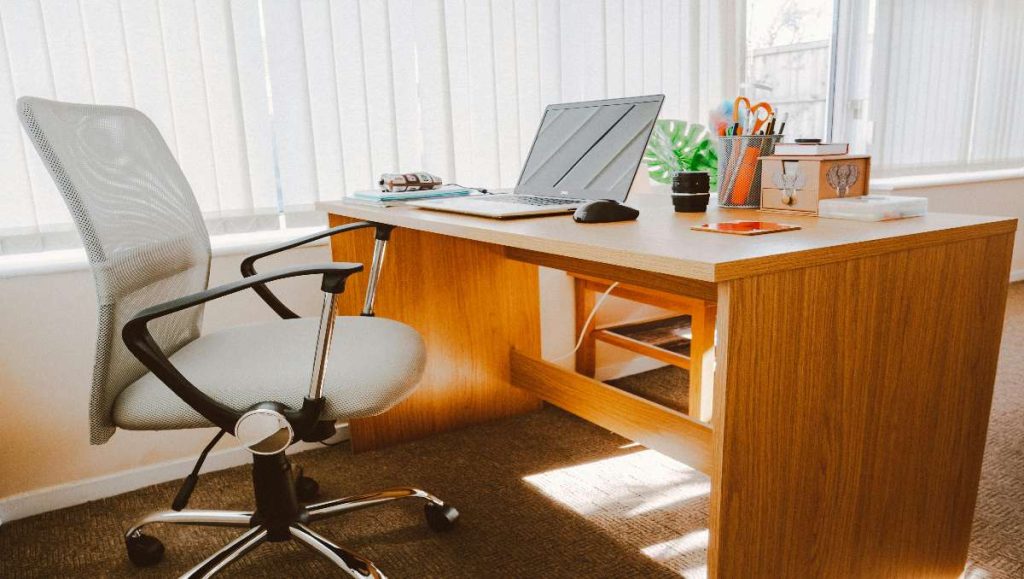
Ergonomic furniture is specifically designed to support the natural posture and movements of the human body, reducing strain and enhancing comfort during prolonged use. Unlike standard furniture, which often takes a one-size-fits-all approach, ergonomic pieces are crafted to be highly adjustable and tailored to individual needs, accommodating various body types, postures, and work habits.
Key features that make furniture ergonomic include:
- Adjustable Chairs: These adjustments allow users to customize the chair to support the spine’s natural curve, preventing lower back pain and enhancing overall comfort.
- Sit-Stand Desks: Height-adjustable desks, or sit-stand desks, empower users to switch between sitting and standing throughout the day, reducing sedentary behavior.
- Lumbar Support: Proper lumbar support prevents slouching, reduces pressure on the spine, and can alleviate long-term back strain.
The Cost of Poor Ergonomics
Poor ergonomics in the workplace can result in substantial financial costs, affecting both organizations and their employees.
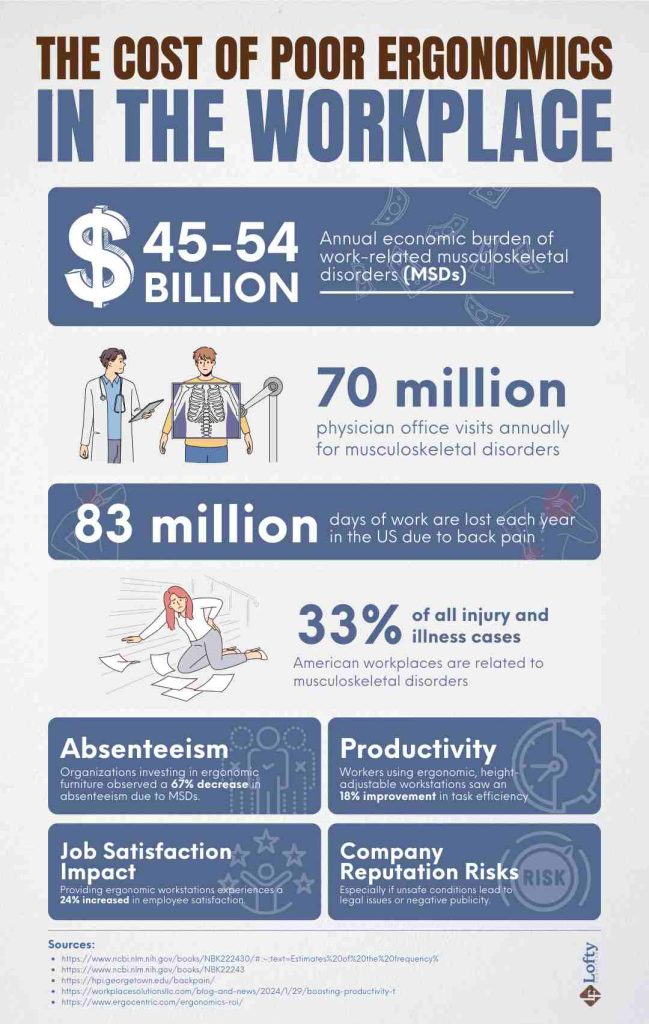
Direct Costs
Direct costs refer to the immediate expenses caused by poor ergonomics, such as medical treatments, compensation claims, and lost wages due to work-related injuries. For example, back pain alone is the leading cause of missed work in adults, with millions of workdays lost annually in the U.S. because of it. Work-related MSDs cost U.S. employers between $45 and $54 billion each year, including medical expenses and lost productivity. In one case, an employee was awarded £37,500 in compensation after suffering a repetitive strain injury due to poor workplace ergonomics.
Beyond injuries, poor ergonomics also contributes to absenteeism (employees missing work) and presenteeism (employees working while in pain but performing below their best).
Indirect Costs
Indirect costs are the less obvious but equally impactful consequences of poor ergonomics. These include reduced productivity, lower employee morale, and higher turnover rates.
Studies show that employees with access to ergonomic workstations are significantly more productive, completing tasks 18% faster than those using traditional setups. Another study examining the BPO sector found that ergonomic adjustments had a highly significant relationship to overall job satisfaction and productivity. Additionally, poor ergonomic practices can harm a company’s reputation, especially if workplace injuries result in legal action or negative publicity.
The ROI of Ergonomic Furniture
As businesses increasingly prioritize employee well-being, the ROI of ergonomic furniture becomes even clearer. Let’s explore the various factors contributing to this ROI, from health improvements to reduced healthcare costs.
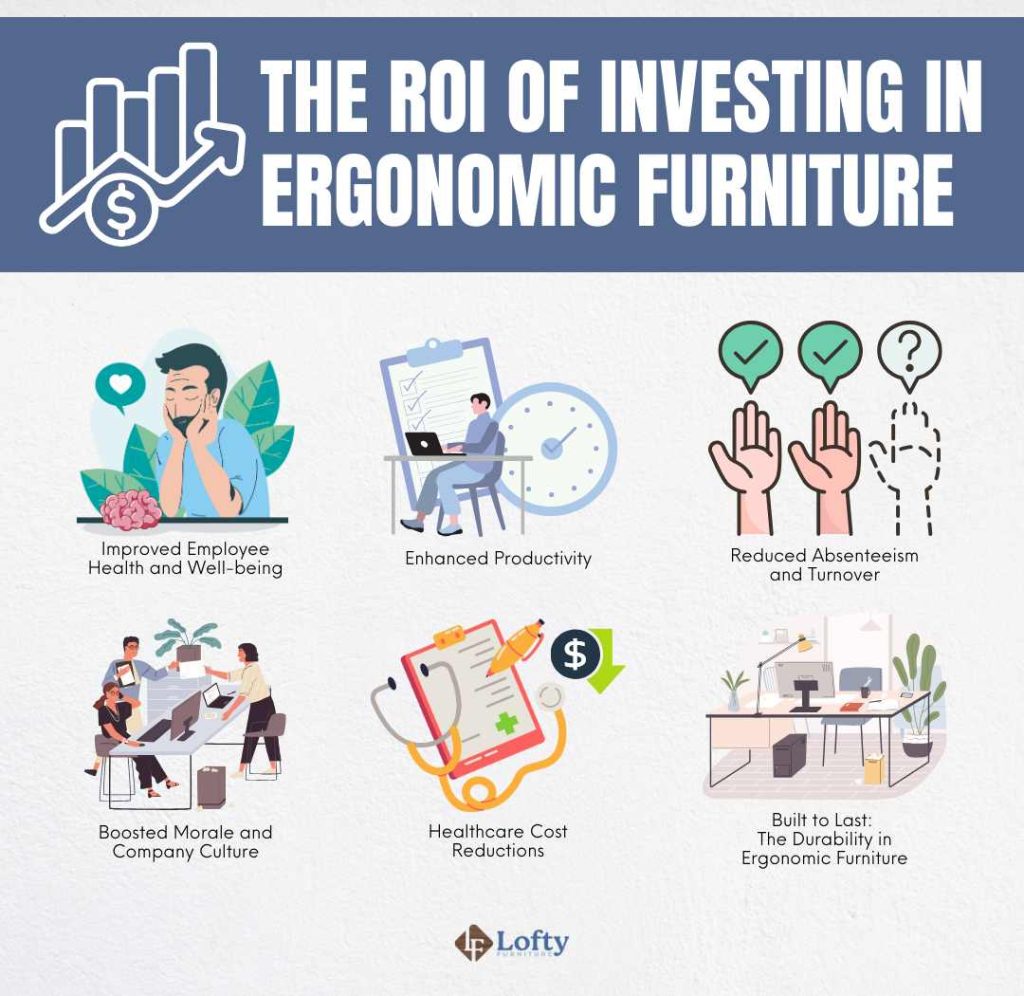
1. Improved Employee Health and Well-being
Organizations investing in ergonomic furniture witness considerable improvements in employee health and well-being. Ergonomic chairs, height-adjustable desks, and lumbar support reduce strain on the body, helping to prevent common workplace ailments like back pain, carpal tunnel syndrome, and neck strain. A Gallup survey reveals that employees increasingly prioritize well-being in their work environment and are willing to leave and change employers to find it.
2. Enhanced Productivity and Reduced Absenteeism
The relationship between ergonomics and productivity is well-documented. Employees working with ergonomic furniture and setups can perform tasks with greater comfort and efficiency. For instance, the Human Factors and Ergonomics Society reports a 15% increase in productivity when employees work in an ergonomically designed environment. Additionally, a healthier work environment can help retain employees. According to a study, companies that invested in ergonomic furniture saw a 67% decrease in absenteeism related to MSDs.
3. Boosted Morale and Company Culture
When employees feel physically supported and comfortable, it positively impacts morale and job satisfaction. As IOSH warns, “Take better care of workers or risk greater uncertainty.” Ergonomic investment in employee comfort and well-being promotes a positive company culture, which in turn supports higher engagement, loyalty, and enthusiasm within the team.
4. Healthcare Cost Reductions
With the total economic burden of work-related MSDs estimated at $45-$54 billion annually, organizations that prioritize ergonomic setups can avoid significant medical expenses. In fact, a study by the Occupational Medicine Journal found that companies that adopted ergonomic practices and furniture saw a 32% decrease in healthcare costs related to work injuries and illnesses.
5. Built to Last: The Durability in Ergonomic Furniture
High-quality ergonomic furniture is an investment not only in health but also in durability. Ergonomic chairs are built to support a wide range of body types and continuous use. Durable ergonomic furniture reduces the need for frequent replacements, leading to cost savings over time.
Experience the difference ergonomic furniture can make. Explore our range now!
How to Measure the ROI of Ergonomic Furniture
Measuring the return on investment (ROI) of ergonomic furniture might seem tricky at first, but it’s easier when you break it down into simple steps. To measure ROI, businesses can start by considering this ROI formula from Humanscale:
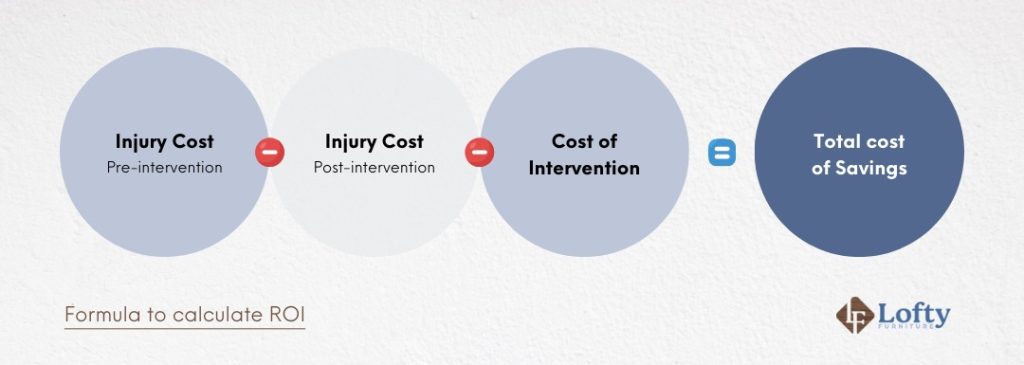
Another way to measure ROI is by using tools like the Sit-Stand ROI Calculator, which helps estimate financial returns from ergonomic improvements. It considers factors such as employee salaries, reduced absenteeism, and productivity boosts from sit-stand desks or other ergonomic furniture.
Samuel Huang, CEO of Tele Ads Agency, shares:
“Companies often use surveys, health reports, and productivity data to track ROI. Changes are usually noticeable within 6 to 18 months as employees adjust and work more comfortably. Ergonomic furniture delivers measurable value by improving wellbeing and efficiency.”
Deploying Ergonomic Solutions
When deployed effectively, workplace ergonomics not only reduces the risk of injury but also enhances employee productivity and satisfaction. To start, it’s essential to assess the specific demands of each job function. Training employees to use ergonomic furniture correctly is also equally important. Even the best ergonomic equipment can be underutilized if employees are unaware of its features and proper adjustments. Educating employees on optimal desk heights, chair adjustments, and workstation configurations can maximize the benefits of ergonomic investments. Furthermore, regularly gathering feedback from employees about their comfort and productivity can provide valuable insights, helping organizations refine their ergonomic solutions over time.
Beyond furniture, additional ergonomic accessories can further reduce strain and improve comfort.
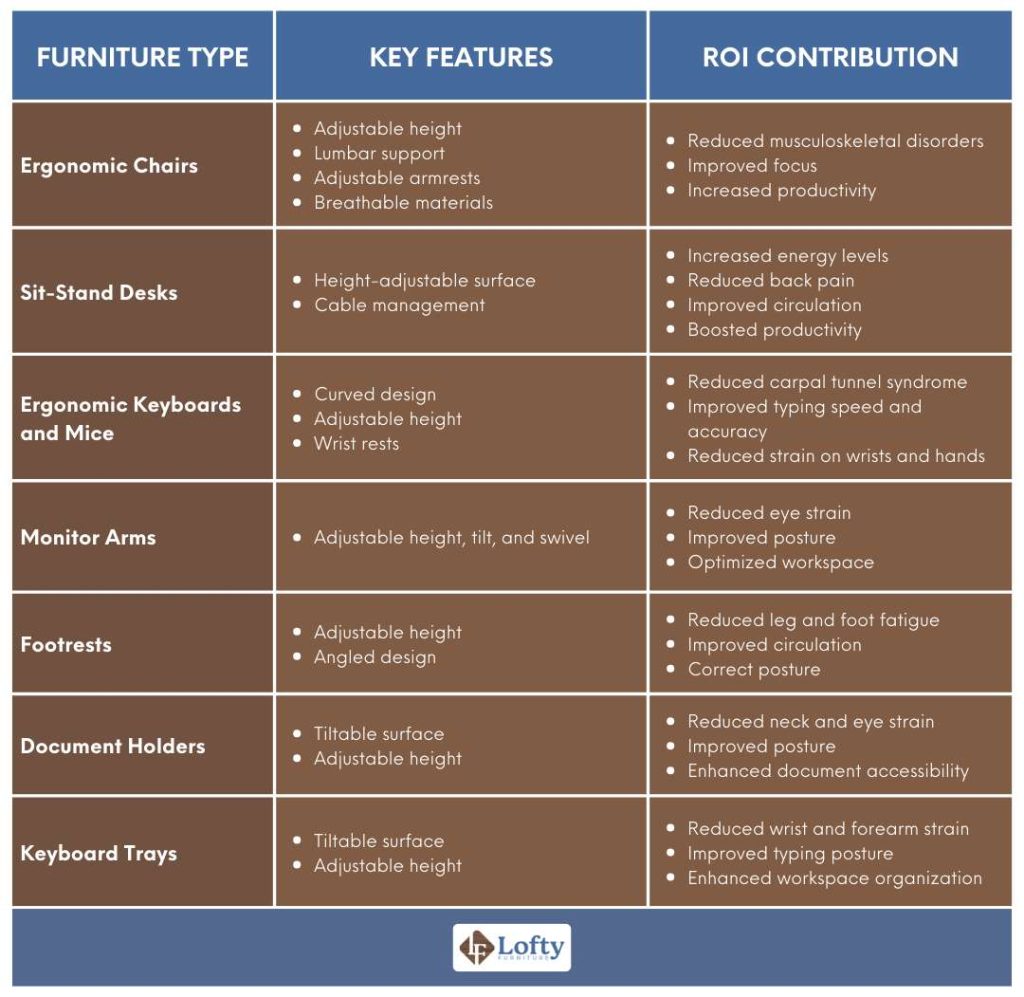
The Bottom Line
Investing in workplace ergonomics is more than just a financial expenditure; it’s a commitment to enhancing employee well-being and creating a healthier, more productive work environment. While the upfront costs of ergonomic furniture may seem significant, the long-term returns—through reduced absenteeism, healthcare expenses, and enhanced job satisfaction—make it a wise and sustainable investment. Ultimately, the value of ergonomic furniture goes beyond the financial returns, contributing to a more motivated, engaged, and healthy workforce.
FAQs
How often should ergonomic assessments be conducted?
Ergonomic assessments should be conducted regularly to ensure that furniture and workstations are meeting employee needs and health standards. A full assessment is recommended at least once a year or whenever there are significant changes in the workspace or employee roles.
What are the best ways to measure ROI when investing in ergonomic furniture?
The best ways to measure ROI include tracking reductions in absenteeism, productivity improvements, and healthcare savings related to workplace injuries. Using tools like the Sit-Stand ROI Calculator and analyzing employee feedback on comfort and job satisfaction are also effective ways to gauge ROI.
How long does it typically take to see a return on investment from ergonomic furniture?
On average, companies may begin to notice measurable improvements within 6 to 12 months, with a full ROI often being realized within 1 to 2 years as absenteeism, productivity, and healthcare costs are impacted.
What types of ergonomic furniture offer the highest ROI?
Sit-stand desks, ergonomic and desk chairs, and height-adjustable workstations typically offer the highest ROI. These solutions directly address the most common causes of discomfort and injury—prolonged sitting and poor posture. Additionally, ergonomic accessories like monitor arms, keyboard trays, and anti-fatigue mats can also contribute significantly to reducing strain and improving employee comfort.
